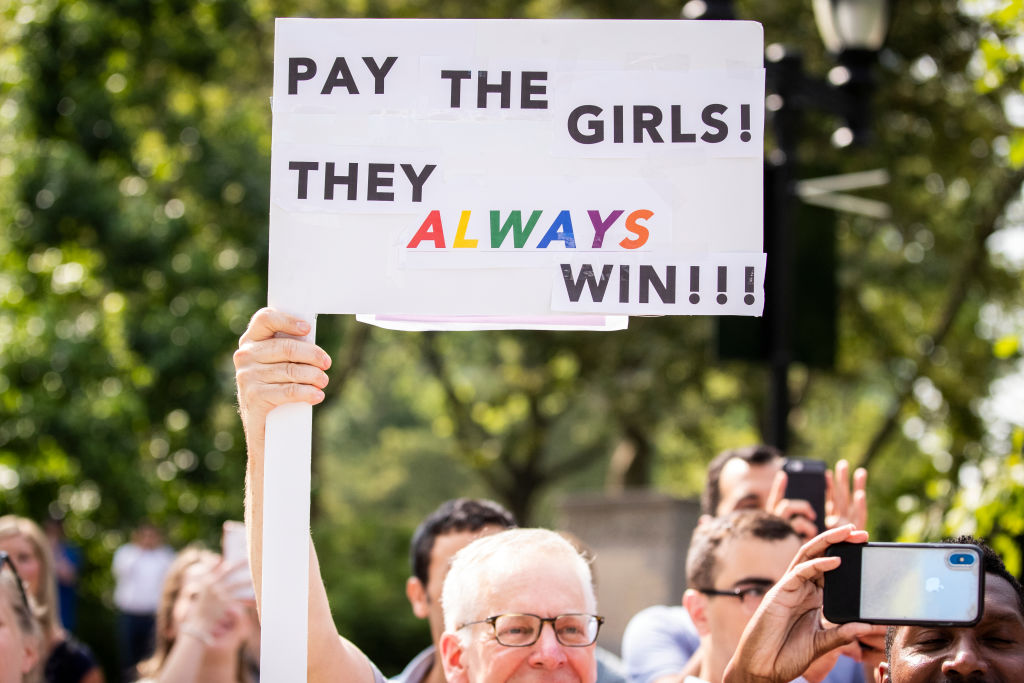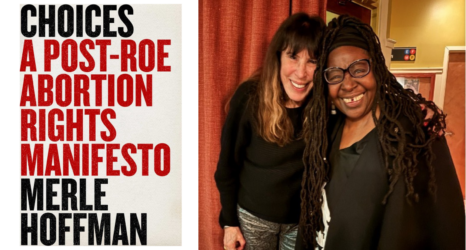
The U.S. Women’s National Soccer Team (USWNT) won pay equity in 2022 after years of legal back-and-forth and public activism. While that’s an amazing achievement for these young women, another inequity looms for them down the road: retirement inequity.
Retirement services provider TIAA has launched a campaign to highlight retirement inequity and call for pay equity across all women’s careers. The #RetireInequality campaign aims to educate Americans about the reasons for retirement inequity and to advocate for opportunities and policies that will increase women’s retirement savings.
Now TIAA has partnered with several women’s soccer players to raise consciousness about the issue, not only for athletes, but for all women in the paid workforce. As part of the #RetireInequality campaign, the organization has also made a $1.5 million commitment to the Women’s Sports Foundation.
Why Does Retirement Inequity Exist?
Despite six decades of feminist activism around wages, the pay gap still exists. Women earn less than men—around 82 cents on the dollar, worse for Black, Indigenous and other women of color. Retirement contributions are usually figured as a percentage of wages—so lower wages lead to lower retirement contributions.

The expectations of women’s family responsibilities also contribute to the problem. Many women take time out of the workforce to raise children or care for sick or aging family members.
Not surprisingly, the COVID-19 pandemic has made the situation worse. Nearly 2 million women dropped out of the workforce during the pandemic. Making up lost wages and retirement savings is almost impossible.
Women also typically retire two years before men, and they live about five years longer.
Women’s Soccer and Retirement Inequity
USWNT’s public struggle for pay equity made the sport an obvious launchpad for the TIAA partnership. Years of lower wages mean that players will never catch up with men players’ retirement incomes. Across the board, women retire with 30 percent less retirement income than men.
Freya Coombe, who manages the Angel City FC, explained to Ms. that, over the years, women soccer players may have received things like housing in addition to salary. That may have helped, she noted, in terms of day-to-day living costs, but it did nothing for retirement.
Coombe also pointed out that many players’ careers end in their mid- to late 30s. Again, they face salary discrimination as they look to follow up their playing career with other jobs.
You don’t even think about retirement. You are living on what comes in. Therefore, the thought of being able to put money away…
Jill Ellis, president of the San Diego Wave FC
For herself, she expressed concern. “I think the biggest thing is, ‘What’s next?’ and thinking about that retirement piece is daunting. I’ve come into the professional game late—I’ve been a youth coach, and that doesn’t set you up for retirement in a great place. It can be daunting thinking about how many years I need to be on the field in terms of the physical nature of the work as well. How can I make that up?”
Jill Ellis, president of the San Diego Wave FC and former coach of the USWNT, agreed. Without the benefit of pay equity, she too faces questions about retirement. Because there is an imbalance in pay for women athletes and coaches, she said, “You don’t even think about retirement. You are living on what comes in. Therefore, the thought of being able to put money away…”
Coombe also saw the problem of retirement inequity as part of the larger problem of discrimination in sports. She pointed out the low number of women coaches, the need for mentoring, the lack of representation on television and streaming services, and the lack of opportunities—”whether it’s in the broadcast booth or it’s in the boardroom or it’s on the field.”
She said that when one group of women makes progress, there’s a ripple effect. So, the USWNT’s victory in pay equity shines a light on other places where pay inequity persists.
“You want to see this change broaden to every area where there are women in the workforce,” she said.
Women soccer coaches face the same challenges of inequitable salaries and therefore inequitable retirement incomes. Ellis did not begin to think about saving for retirement until her mid to late 40s. Now, she said, “I am making sure with my daughter that she understands once she hits that workforce, whatever her age, that this is something she tries to make a part of her routine, a part of her daily habits.”
Ellis said the San Diego Wave club is offering financial education to its players. Because she was not educated about retirement, she’s making sure her players are.
Coombe worries about how difficult it is for women, herself included, to try to make up retirement savings lost because of inequity: “Men have been earning higher salaries and there have been more opportunities in the professional game for far longer. It’s tough. It’s something that’s on our minds all the time I think.”
Sarah Fuller, who played goalkeeper for the Minnesota Aurora FC, was also the first woman to score in a Power Five football game when she kicked an extra point for Vanderbilt in 2020. Learning about how women have 30 percent less retirement income than men caused Fuller to start to get serious about her retirement. “I was like, I need to start planning out my future because I don’t want to be in that situation where I can’t afford to have a happy and enjoyable retirement.”
Messiah Bright, who was just drafted by the Orlando Pride FC after a record-breaking career at Texas Christian University, said she hadn’t really been thinking about saving for retirement yet until TIAA approached her about its campaign.
Now, just entering her professional soccer career, she is now paying attention.
“I think this campaign can definitely bring awareness to the retirement gap that women of all professions experience. Even in women’s basketball, softball,” she said. “I think it encourages women to think about planning for their retirement. I think it help them navigate how they should plan for it in the near future. I think it is also important because this is our security blanket. It shows us that no matter what happens we can fall back on the hard work we have done and put in over the years.”
Beyond Women’s Soccer
TIAA’s campaign with women’s soccer players sends a clear message to all women in the paid workforce—that women need to become aware, advocate for themselves and others, and make structural change to achieve retirement equity.
We have to pay attention to the intersections too, as Coombe noted. Race, as well as gender, shapes inequity, and Black, Indigenous and other women of color face even greater barriers to pay and retirement equity.
TIAA chief marketing office Micky Onvural said the company saw women’s soccer as a natural partner for their message of pay and retirement equity because of the way “these women fight every day for equality in their field.” According to Onvural, TIAA hopes the initiative will “change the conversation around retirement and reach new audiences across age, race and gender about the work that still needs to be done to ensure more people have enough income in retirement.”
How might this happen? TIAA has some suggestions:
- Employers should make pay equity a priority and engage in regular pay audits to identify and address income gaps.
- Employers should expand opportunities for advancement for women that will increase pay and retirement savings.
- Employers should implement benefits that help support women as they negotiate gendered expectations of child and family care, such as flexible workplaces and hours and paid parental and family leave. Such benefits may also encourage more women to enter and to stay in the paid workforce.

USWNT fought long and hard for years before achieving pay equity. Retirement equity will likely be a long struggle as well. All women in the paid workforce would do well to hear the concerns of women soccer players and coaches and consider their own retirement savings.
“We are not given what we are promised or what we deserve” said Fuller. “Things like that obviously still need to be worked on. I commend those who are willing to step forward and speak against those inequalities because it’s not easy to do. I’ve had many a troll in my life. It’s not easy to step out into the spotlight, but we’ve definitely seen great progress. We just need to continue to go in that direction.”
She added that what women athletes do also matters for girls. She remembered all the girls around her watching the World Cup as they were growing up. With the World Cup coming around again this summer, she imagined all the girls watching this time knowing the dream of playing equitably paid professional soccer can now be a reality.
We can only hope that soccer leads the way, both in pay equity and retirement equity. Coombe concluded, retirement equity “is something that we all need to get behind.”
She hopes TIAA’s campaign raises awareness and encourages employers to champion equity.
“Sometimes as women we get into our lanes, we do our jobs, we put our head down, we are focused on what we need to do and we don’t take advantage of the opportunity that presents itself,” she said. “All of us have platforms. I do credit the U.S. women for social change for pay equity. They have used their voices. What has enabled that? I think it’s also much like Billie Jean King, when you are successful you have a bigger reach, a bigger platform. When you have global reach and you are successful, there is a responsibility to use your voice. That is what the women’s soccer team has done.
Full disclosure: My retirement savings are with TIAA.
Up next:
U.S. democracy is at a dangerous inflection point—from the demise of abortion rights, to a lack of pay equity and parental leave, to skyrocketing maternal mortality, and attacks on trans health. Left unchecked, these crises will lead to wider gaps in political participation and representation. For 50 years, Ms. has been forging feminist journalism—reporting, rebelling and truth-telling from the front-lines, championing the Equal Rights Amendment, and centering the stories of those most impacted. With all that’s at stake for equality, we are redoubling our commitment for the next 50 years. In turn, we need your help, Support Ms. today with a donation—any amount that is meaningful to you. For as little as $5 each month, you’ll receive the print magazine along with our e-newsletters, action alerts, and invitations to Ms. Studios events and podcasts. We are grateful for your loyalty and ferocity.





